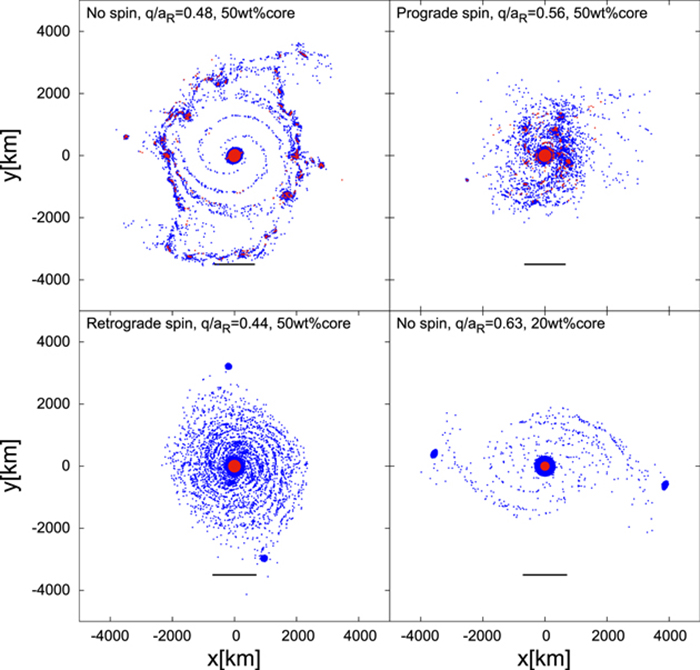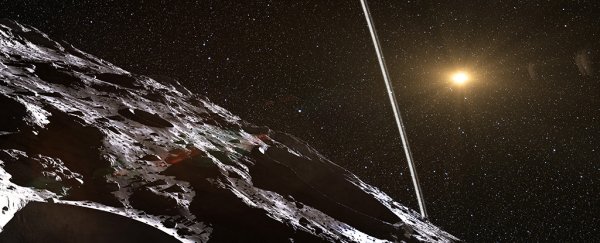Astronomers think they finally know how rings can form around minor planets, and it looks like these rings could turn out to be more common than we thought.
Minor planets are any of the objects orbiting the Sun that are bigger than comets but not quite big enough to be planets – this includes dwarf planets, asteroids, and most of the stuff in the Kuiper belt.
A couple of years ago, sky gazers made the surprising discovery that one of these known minor planets in the Solar System, Chariklo, had rings around it. For the latest research, astronomers wanted to figure out where these rings came from.
The minor planets analysed in this study are called centaurs, and orbit between Jupiter and Neptune. Experts say there are around 44,000 of these centaurs that are larger than a kilometre in diameter.
In the new study, researchers from Kobe University in Japan used a series of computer simulations to model tidal pulls between the minor and major planets. The simulations showed that close encounters between the centaurs and the big planets, like Saturn and Jupiter, can form rings around the minor planets.
This would happen if the centaur had a silicate core covered by an icy mantle – ice would be pulled off the smaller planet by the drag of the larger one, and settle around the minor planet in a ring shape.
"Our numerical results suggest that ring formation would be a natural outcome of such extreme close encounters, and centaurs can naturally have such ring systems because they cross the orbits of the giant planets," the authors explain in their paper.
 Computer simulation showing ring formations. Credit: Hyodo et al.
Computer simulation showing ring formations. Credit: Hyodo et al.
On top of that, the team thinks that as many as 10 percent of centaurs could have rings around them still waiting to be discovered, although they admit that more data is needed to be sure.
In addition to these rings, "a significant fraction" of centaurs may also have small moons attached, pulled away by the same gravitational forces, the team suggests.
As well as Chariklo, which we know has rings around it, astronomers also think that another centaur called Chiron has a similar rocky halo, though this has yet to be proved.
The next step is to analyse the evolution of these minor planets over a longer period of time, and with more comprehensive source data.
It seems there's a lot more to come from studying these smaller space objects as they whizz around the giant planets of the Solar System – there's even a school of thought that centaurs could pose a threat to life on Earth.
How, exactly? Well, as these 'little' planets can reach up to 257 kilometres (160 miles) across, having one of them change course and crash into the Earth would have a serious impact on the place we call home.
Experts think it's happened before, so could it be a case of when it might happen again…?
The findings have been published in The Astrophysical Journal Letters.
